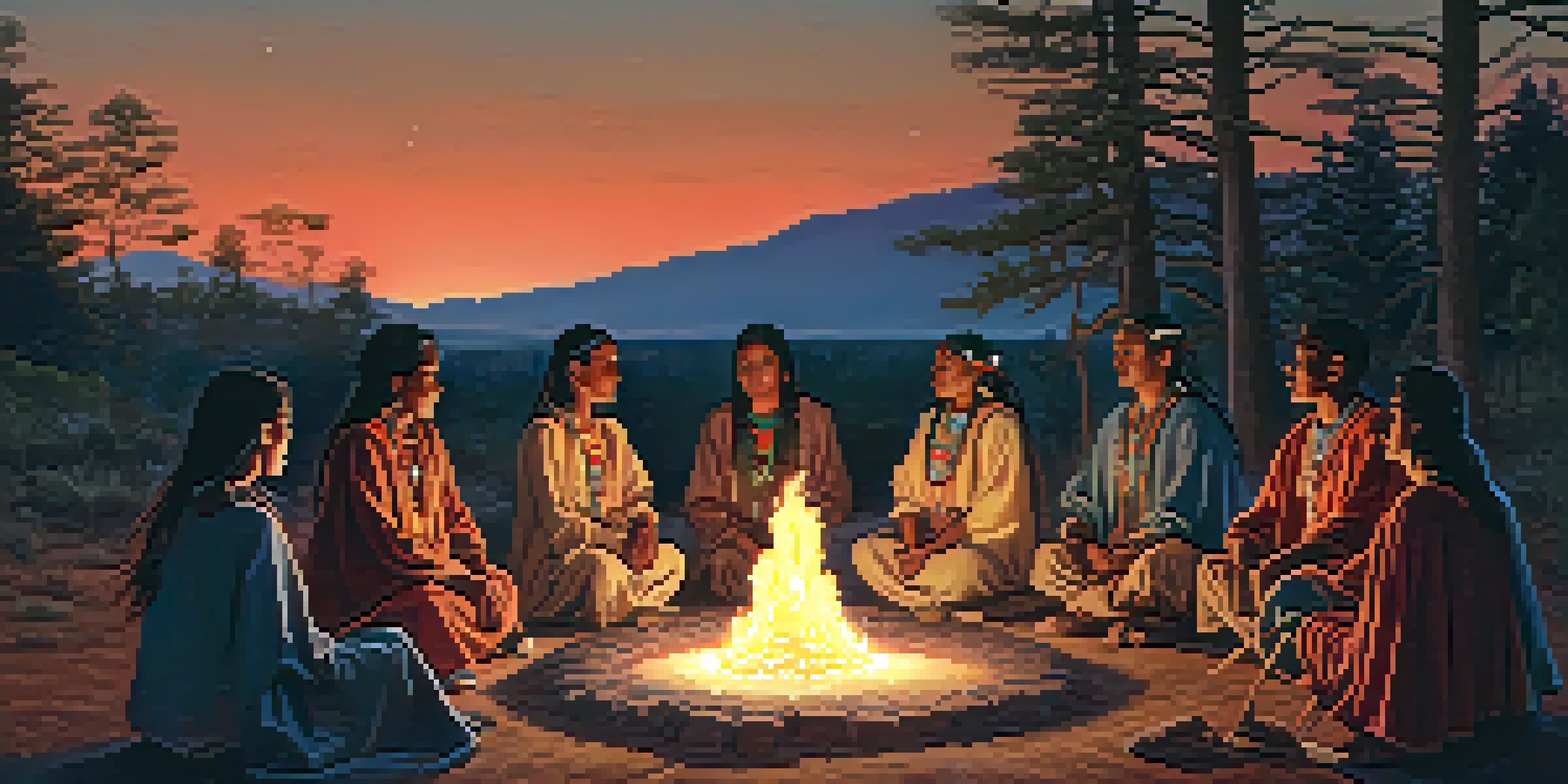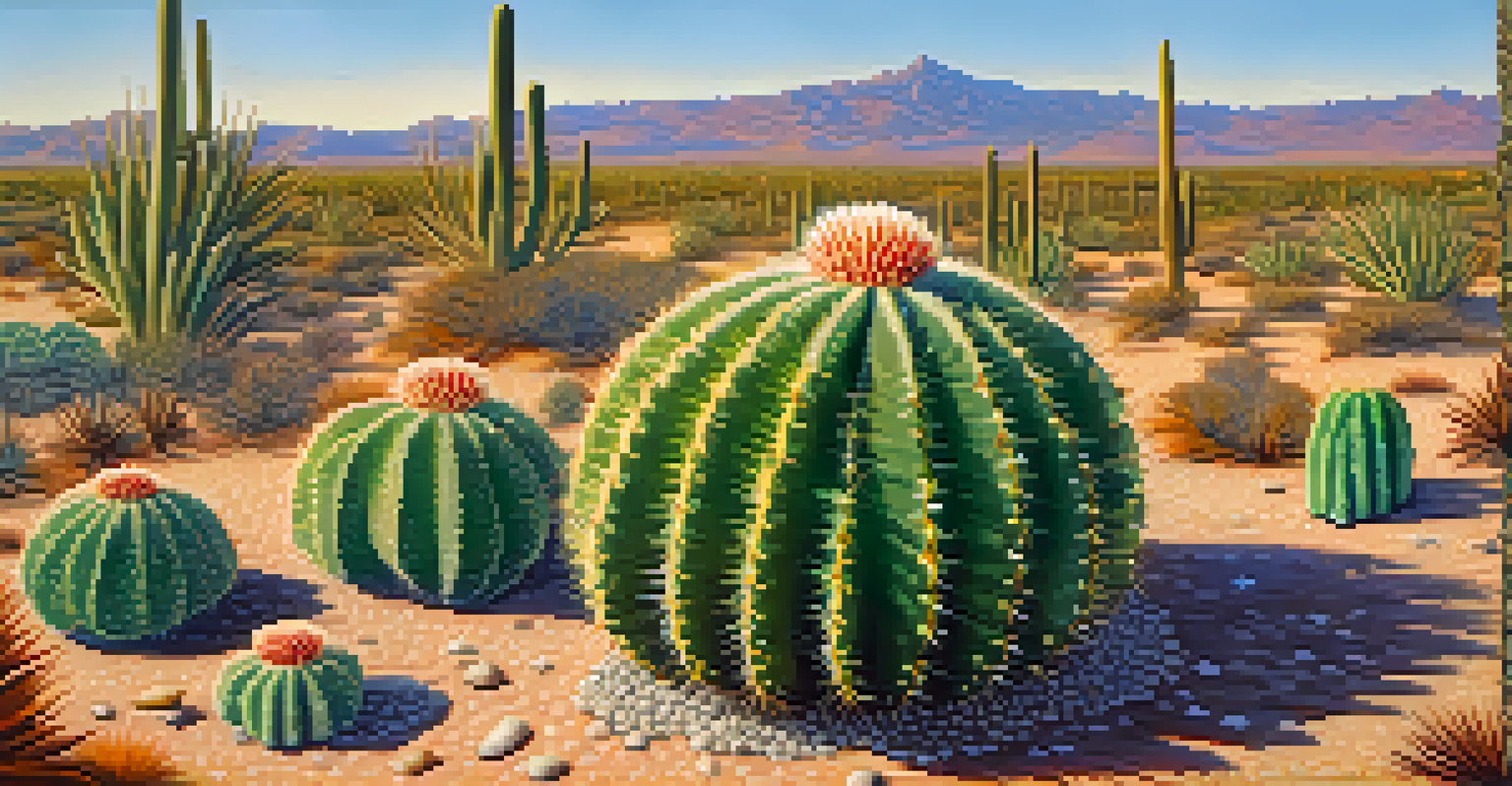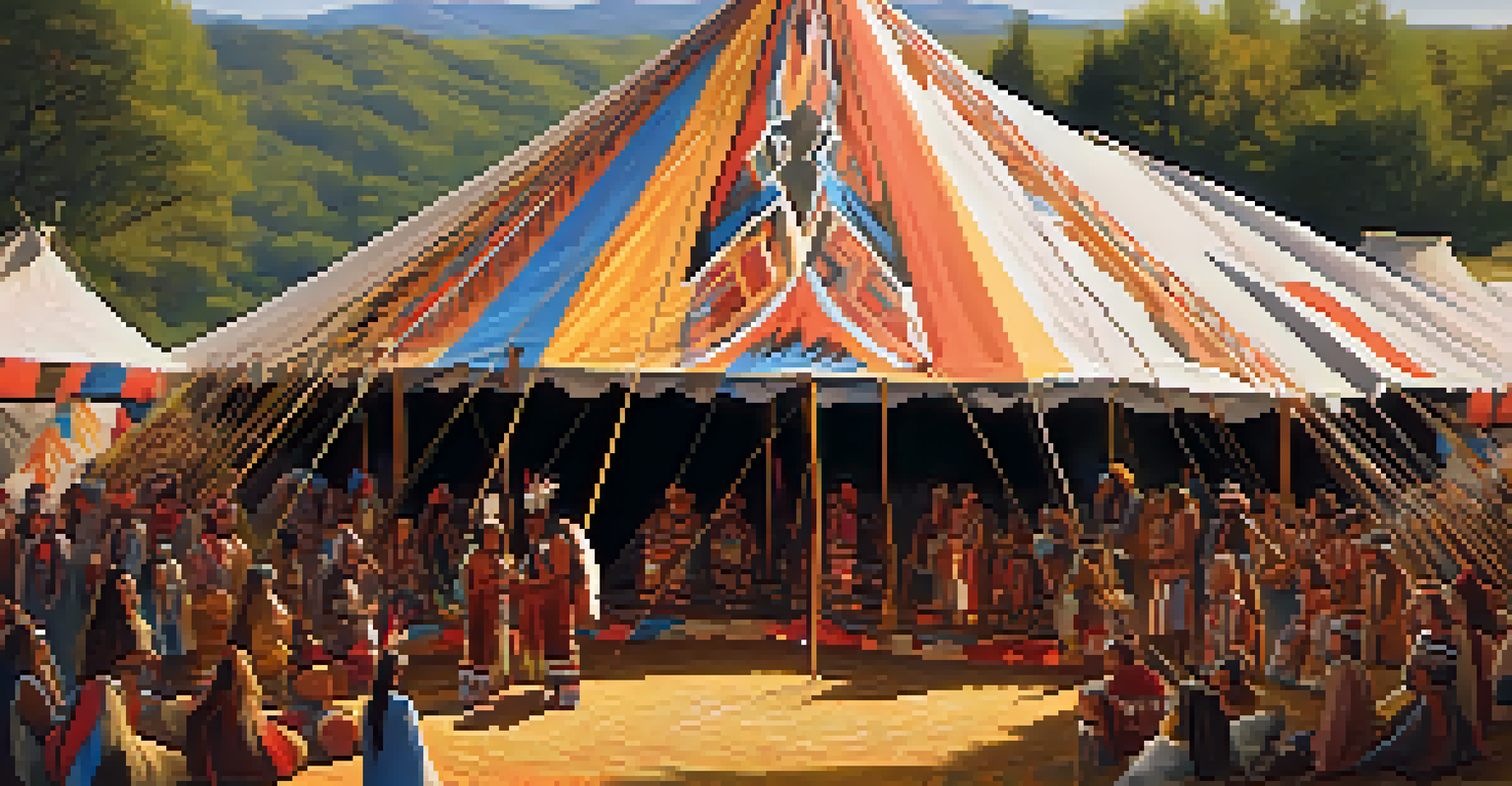Psychoactive Substances in Religion: The Case of Peyote

The Cultural Significance of Peyote in Native American Traditions
Peyote, a small cactus containing the psychoactive compound mescaline, has been used for thousands of years by Native American tribes. Its significance extends beyond mere recreation; it serves as a spiritual tool in various religious ceremonies. The use of peyote is deeply intertwined with the cultural identities of tribes such as the Huichol and the Lakota, where it is seen as a bridge to the divine.
Psychedelics offer a glimpse into the sacredness of nature and the interconnectedness of life.
In these traditions, peyote is not just a substance; it is a sacred gift that facilitates communication with the spirit world. Participants in rituals often report profound experiences that foster a sense of unity with nature and the cosmos. These experiences are integral to the healing practices and spiritual beliefs of the communities that use peyote.
Understanding peyote's role within these cultural contexts helps to highlight its importance beyond the realm of psychoactive substances. It is a vital component of Native American spirituality, representing a deep connection to ancestors, nature, and the divine.
Psychoactive Effects: The Science Behind Peyote
The psychoactive properties of peyote are primarily due to the presence of mescaline, a naturally occurring alkaloid. Mescaline affects the brain's serotonin receptors, leading to altered perceptions, enhanced emotional experiences, and a sense of interconnectedness. These effects can last anywhere from 10 to 12 hours, making peyote a powerful tool for spiritual exploration.

Users often describe their experiences with peyote as enlightening, with visions and insights that can lead to personal revelations. This process of introspection is not only significant for individual growth but also reinforces communal bonds when shared during ceremonies. The scientific understanding of mescaline's effects sheds light on why these experiences are so impactful.
Peyote's Spiritual Role in Culture
Peyote is a sacred tool in Native American traditions, facilitating spiritual connection and cultural identity.
However, it's essential to approach the use of peyote with respect and understanding. The powerful nature of the substance calls for careful consideration, especially regarding the intent behind its use in spiritual practices.
Peyote Ceremonies: A Sacred Ritual
Ceremonies involving peyote are often steeped in tradition and ritual, reflecting the beliefs and values of the community. These gatherings typically include singing, drumming, and storytelling, creating an environment conducive to spiritual awakening. Participants come together not only to consume peyote but to support each other in their journeys.
The greatest gift you can give to others is your time, your attention, your love, and your concern.
The structure of these ceremonies can vary from one tribe to another, but the underlying purpose remains consistent: to seek healing, guidance, and connection with the spiritual realm. The shared experience fosters a sense of belonging and reinforces cultural identity among participants. This communal aspect is what distinguishes peyote ceremonies from mere recreational use.
Moreover, the rituals surrounding peyote consumption serve to honor the sacredness of the substance and its role in the lives of those who partake in it. These ceremonies are a testament to the profound respect that Native American cultures have for nature and the spiritual world.
Legal and Social Issues Surrounding Peyote Use
The use of peyote has garnered significant attention in recent years, particularly concerning its legal status. In the United States, peyote is classified as a Schedule I controlled substance, making it illegal for recreational use. However, there are exemptions for its use in religious ceremonies conducted by recognized Native American groups, highlighting the ongoing struggle for cultural rights.
Despite these legal protections, many Native American communities continue to face challenges in preserving their traditional practices. The intersection of cultural identity, spirituality, and legality creates a complex landscape for those who use peyote. Advocacy for the recognition of these practices is essential to ensure that indigenous voices are heard and respected.
Legal Challenges for Peyote Use
Despite legal protections for religious use, Native American communities face ongoing struggles to preserve their peyote traditions.
The conversation around peyote is not just about legality; it also touches on issues of cultural appropriation and respect for indigenous traditions. As more people become aware of peyote's significance, it is crucial to approach the subject with sensitivity and understanding.
The Role of Peyote in Modern Spiritual Movements
In recent years, peyote has attracted the attention of various modern spiritual movements, often viewed as a means to achieve higher consciousness. As people seek alternatives to mainstream religious practices, peyote provides a unique avenue for spiritual exploration. However, this growing interest raises questions about the potential commodification of indigenous traditions.
While some individuals may find genuine spiritual benefits from peyote, it is essential to acknowledge the cultural roots and significance of the substance. The adoption of peyote in non-indigenous contexts can risk overshadowing its traditional importance, leading to concerns about authenticity and respect for the original practitioners. Understanding this dynamic is crucial for fostering a respectful dialogue about peyote use.
Moreover, the blending of peyote use with modern spirituality can also lead to new interpretations and practices. This evolution, while potentially enriching, must be approached with care to ensure that it honors the cultural heritage of Native American communities.
The Future of Peyote and Indigenous Rights
As society becomes increasingly aware of the therapeutic benefits of psychoactive substances, the future of peyote remains uncertain. For many Native American tribes, the preservation of peyote as a sacred plant is crucial for maintaining cultural identity and spiritual practices. Ongoing advocacy for indigenous rights is essential to safeguard these traditions against external pressures and commercialization.
The discourse around peyote also intersects with broader conversations about drug policy reform and the recognition of indigenous sovereignty. As more people recognize the importance of traditional practices, there is hope for a shift in how society views and regulates peyote use. This change could lead to greater respect for the cultural significance of peyote and the rights of the communities that have long relied on it.
Modern Spiritual Movements and Peyote
The growing interest in peyote among modern spiritual movements raises concerns about cultural appropriation and respect for indigenous practices.
Ultimately, the future of peyote will depend on the collective efforts to promote understanding and respect for indigenous cultures. By listening to and supporting these communities, we can help ensure that peyote continues to be a vital part of their spiritual heritage.
Conclusion: Embracing the Legacy of Peyote
Peyote serves as a powerful reminder of the deep connections between spirituality, culture, and nature. Its role in Native American traditions highlights the importance of preserving cultural practices and respecting indigenous knowledge. As we explore the complexities surrounding peyote, it is crucial to approach the subject with empathy and understanding.
The conversations about peyote extend beyond its psychoactive effects; they invite us to reflect on our own relationships with spirituality and nature. By acknowledging the sacredness of peyote and the traditions surrounding it, we can foster a deeper appreciation for the diverse ways in which cultures connect with the divine.

In embracing peyote's legacy, we honor not only the traditions of Native American tribes but also the universal human quest for meaning and connection. Through respectful dialogue and advocacy, we can work towards a future where peyote remains a sacred part of spiritual heritage.